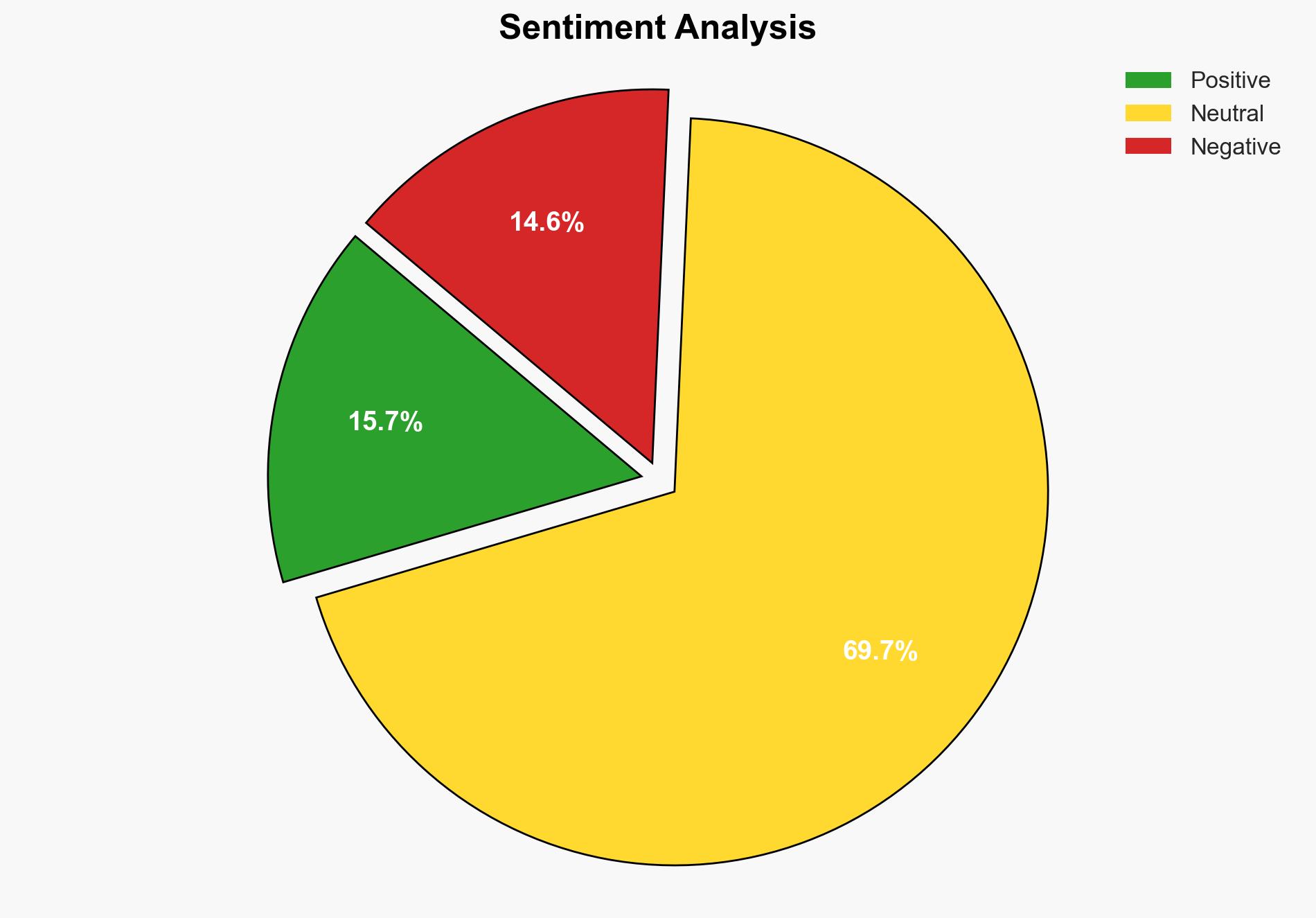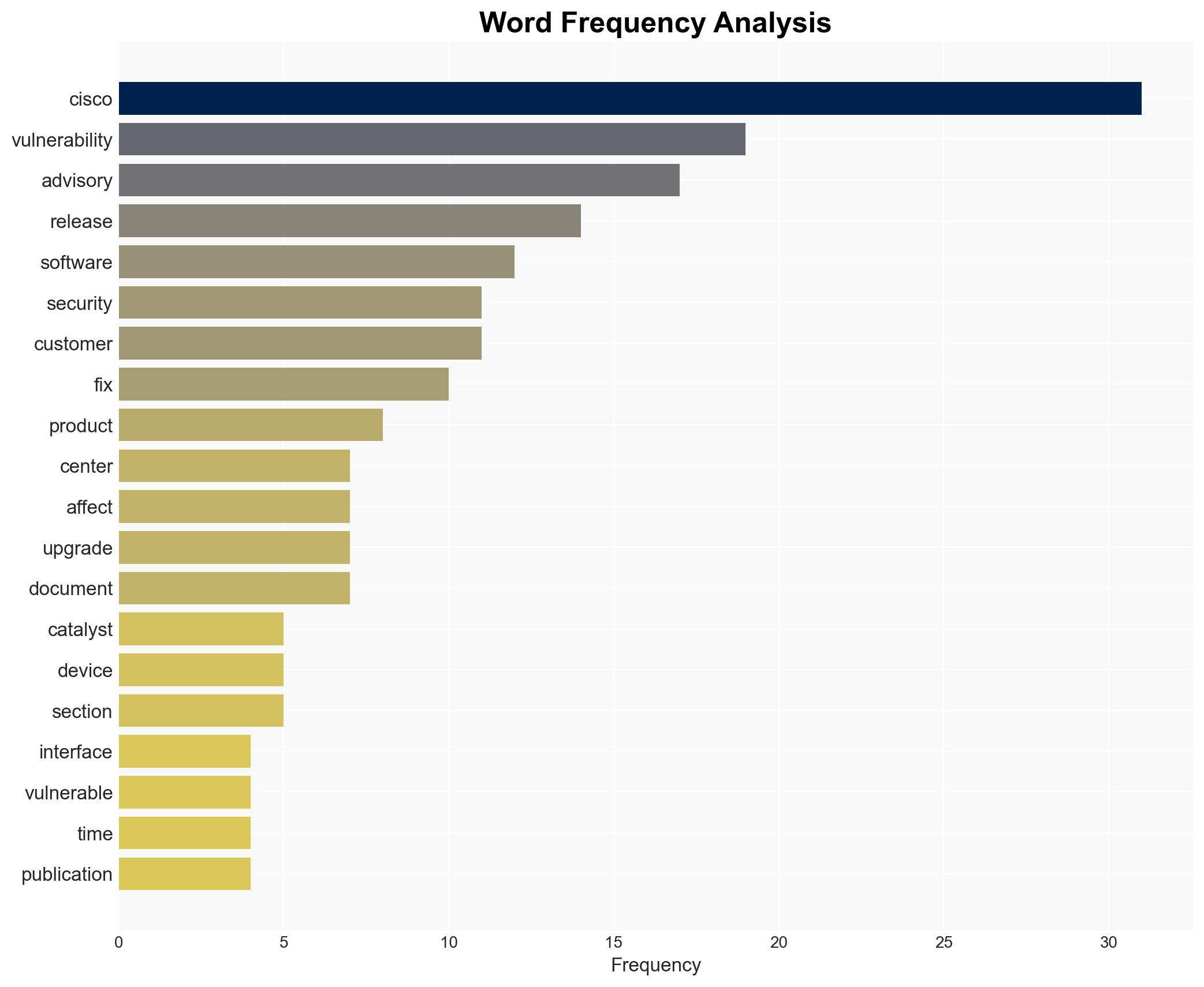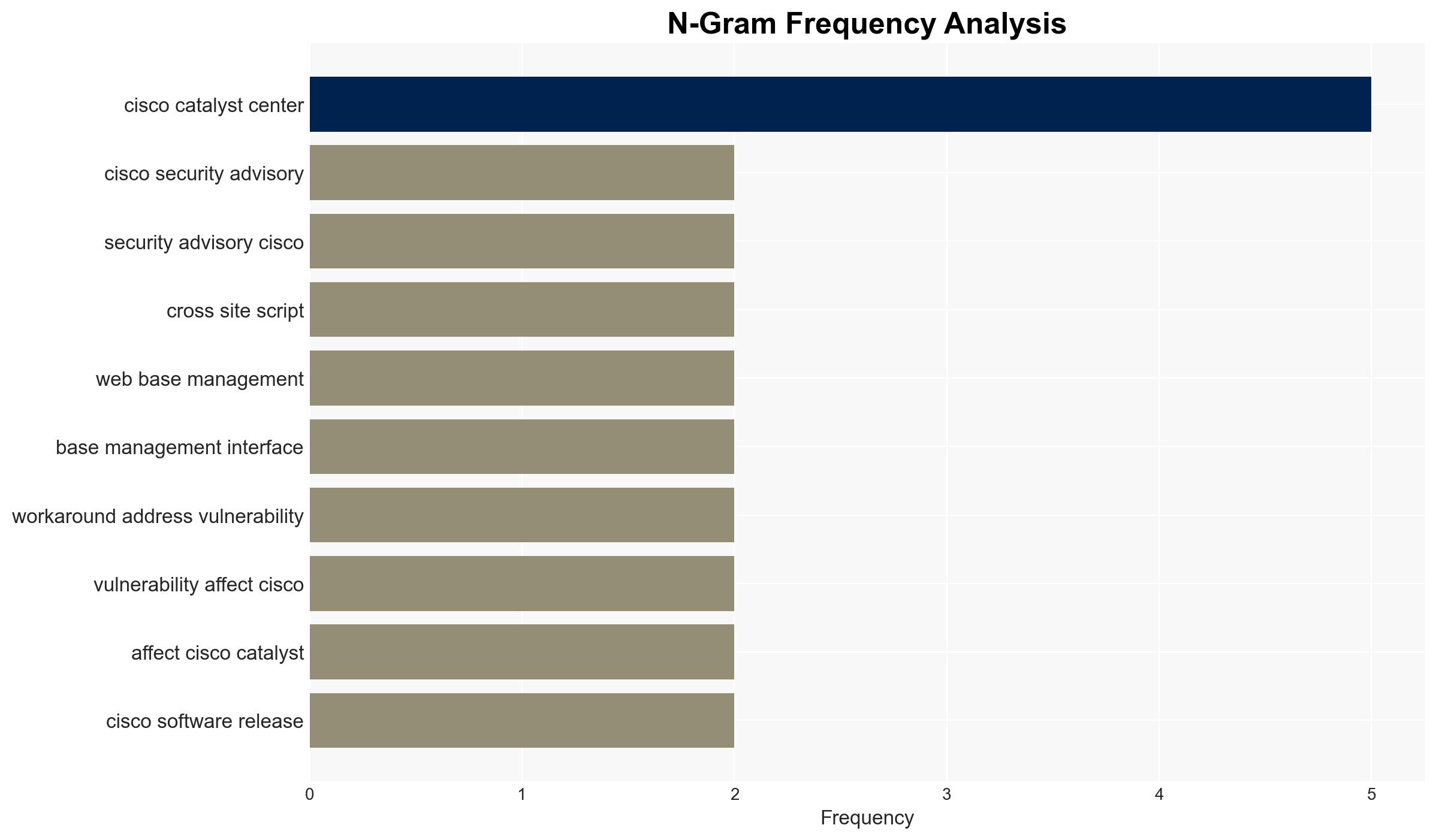Cisco Catalyst Center Cross-Site Scripting Vulnerability – Cisco.com
Published on: 2025-11-13
AI-powered OSINT brief from verified open sources. Automated NLP signal extraction with human verification. See our Methodology and Why WorldWideWatchers.
Intelligence Report: Cisco Catalyst Center Cross-Site Scripting Vulnerability – Cisco.com
1. BLUF (Bottom Line Up Front)
With a moderate confidence level, the most supported hypothesis is that the Cisco Catalyst Center vulnerability represents a significant cybersecurity risk that could be exploited by unauthenticated remote attackers, potentially leading to unauthorized access and data breaches. Immediate action is recommended to upgrade to the fixed software release to mitigate this risk.
2. Competing Hypotheses
Hypothesis 1: The vulnerability is a critical security flaw that could be exploited by attackers to gain unauthorized access to sensitive information, leading to potential data breaches and system compromises.
Hypothesis 2: The vulnerability is overstated and, while it poses some risk, it is unlikely to be widely exploited due to existing mitigations and the complexity of executing a successful attack.
Hypothesis 1 is more likely due to the nature of cross-site scripting vulnerabilities, which are commonly exploited in the wild, and the advisory’s emphasis on the need for immediate software updates.
3. Key Assumptions and Red Flags
Assumptions: It is assumed that the vulnerability affects all versions of the Cisco Catalyst Center as stated, and that the software update provided by Cisco effectively mitigates the risk.
Red Flags: The advisory’s reliance on users to upgrade their software could be a vulnerability if users do not comply. Additionally, the absence of specific attack instances or examples in the advisory could indicate either a lack of known exploitation or an underreporting of incidents.
4. Implications and Strategic Risks
The primary risk is a cybersecurity breach that could lead to unauthorized access to sensitive data, affecting not only the organizations using Cisco Catalyst Center but also their clients and partners. This could escalate into reputational damage, financial losses, and regulatory penalties. Politically, it could strain relationships with stakeholders who rely on Cisco’s security assurances.
5. Recommendations and Outlook
- Organizations using Cisco Catalyst Center should immediately upgrade to the fixed software release to mitigate the vulnerability.
- Conduct regular security audits and penetration testing to identify and address potential vulnerabilities proactively.
- Best-case scenario: The vulnerability is patched quickly, and no significant breaches occur.
- Worst-case scenario: The vulnerability is exploited before patches are applied, leading to widespread data breaches.
- Most-likely scenario: Some organizations may experience breaches due to delayed patching, but widespread exploitation is unlikely if mitigations are applied promptly.
6. Key Individuals and Entities
No specific individuals are named in the advisory. The primary entity involved is Cisco, particularly its Product Security Incident Response Team (PSIRT).
7. Thematic Tags
Cybersecurity
Structured Analytic Techniques Applied
- Adversarial Threat Simulation: Model and simulate actions of cyber adversaries to anticipate vulnerabilities and improve resilience.
- Indicators Development: Detect and monitor behavioral or technical anomalies across systems for early threat detection.
- Bayesian Scenario Modeling: Quantify uncertainty and predict cyberattack pathways using probabilistic inference.
Explore more:
Cybersecurity Briefs ·
Daily Summary ·
Methodology





